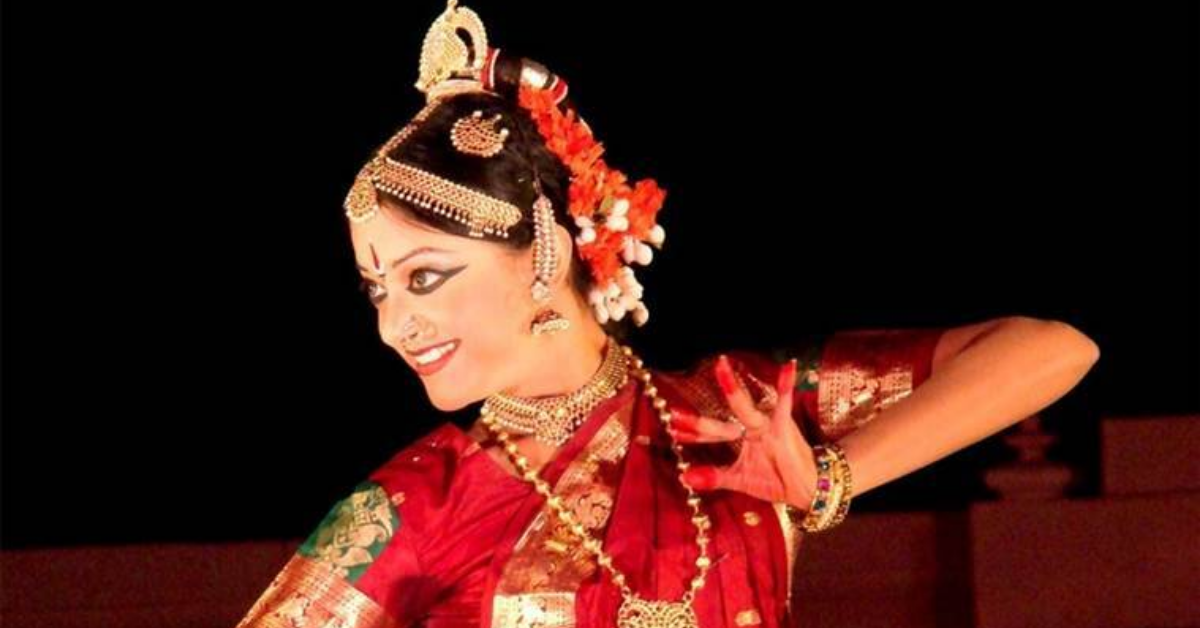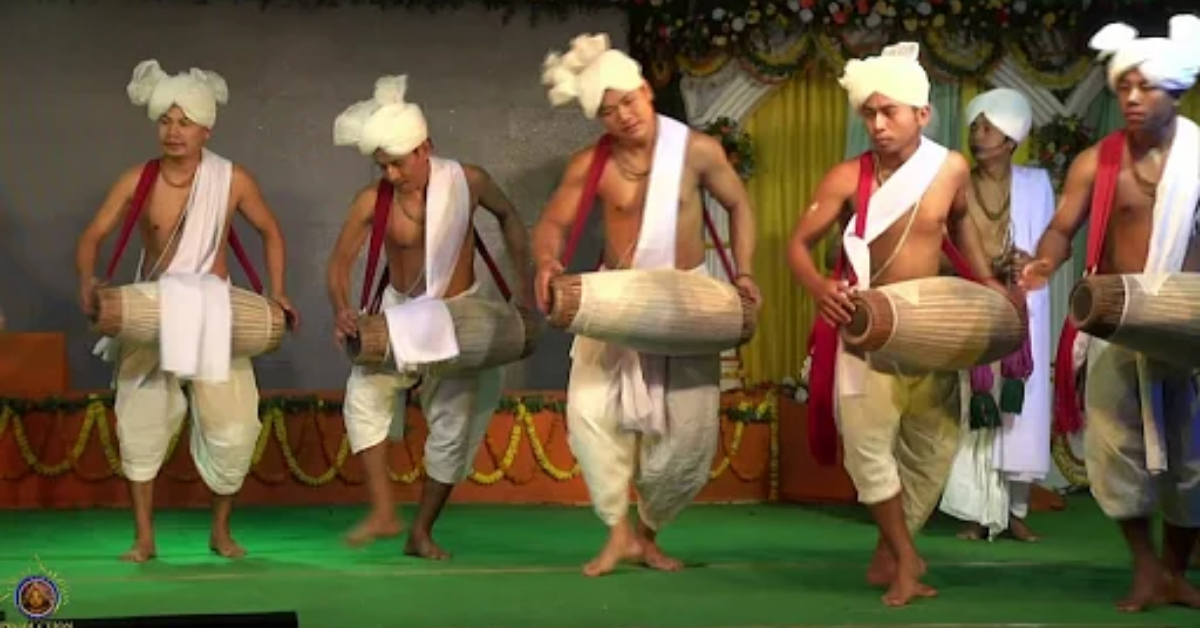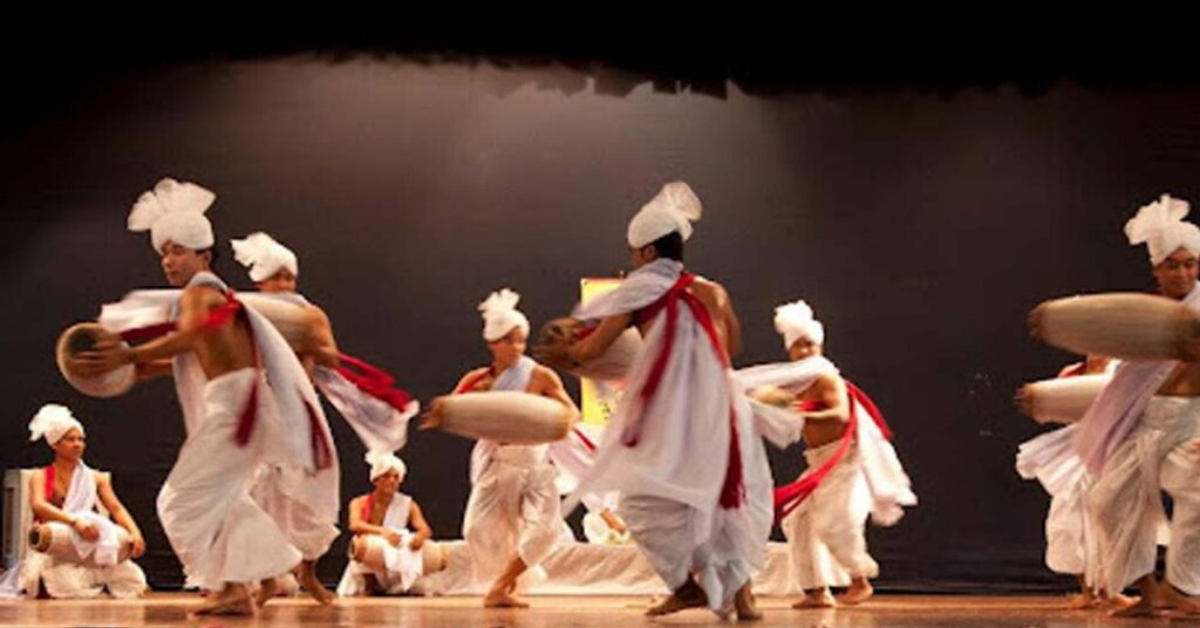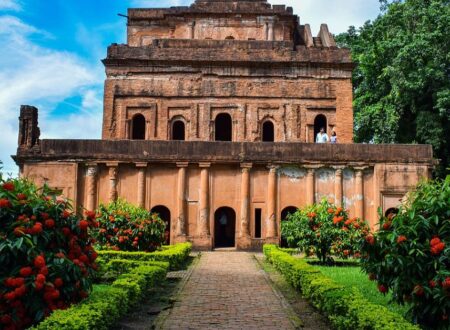Manipur, the name means the land of jewels, is one of the seven sisters of North-East India. Burma’s geographic features are dominated in the east, Nagaland in the North, Assam in the west, and Mizoram in the south. Manipur is a mixture of ancient traditions and rich cultural patterns. However, the Sankirtana Dance shines as one of the significant contributors to Indian art. It is officially recognized in the UNESCO Intangible Cultural Heritage of Humanity list, 2013.
The Sankirtana is a centuries-old art form of dance. Popular among the Vaishnava people of Manipur, it is a version of the song, dance, and tala. The term derives from the Sanskrit root kirtan, meaning “praising” or “celebrating.”. San comes from the word samyak, which means “complete.”

The performances take place in the temple. Where performers tell the story of Krishna through song and dance, connecting the worshippers with the divine. In a typical performance, two drummers and about ten singer-dancers.
In fact, the power and beauty of the aesthetic and religious energy moving through the performers are awe-inspiring. Often bringing the audience members to tears and even causing them to prostrate themselves before the stage.
The social and cultural significance of this Indian dance

Sankirtana punctuates each important milestone of every Manipuri Vaishnavite’s life. It develops and strengthens bonds between the individual and the community at every critical juncture in life. In fact, Sankirtana is a unifying factor by bringing the community together in temples. Even on the streets and in homes on numerous festive occasions throughout the year.
In fact, this Indian dance form primarily depicts the legends of Krishna. Moreover, it acts as a cohesive force that establishes a unique relationship between the devotees and the almighty. Nevertheless, the devotees express their innermost joy, sorrow, and hope with this dance art form. Their performance celebrates Krishna and Radha’s union while also depicting their separation.
A performance outline of this Manipur dance
There are numerous sub-forms of Sankirtana dance. Each performance must begin with an elaborate ritual and a specific set of guidelines, such as offering incense sticks, sandal paste, lamps, and clothes. Then the performance starts with the chanting of Raag, followed by Guruchandrika.
The next act includes ritual singing, drumming, and dance. The singing involved in this art form is a significant type of Indian Classical Singing. About 100 talas and rhythmic variations are used in the performance, including high-pitched female singing.
Drums and cymbals are the main instruments used by musicians. The drums can produce a wide range of tones, from the faintest whisper to the resounding sound of thunder, creating an atmosphere. At specific times, the conch-blower plays two conches simultaneously, heightening the mood of the Sankirtana and establishing the holiness of the performance.
The set rules of the performance
The ceremonies and procedures are strictly enforced. The performance is always done inside a mandap in the form of mandala. The audience is not permitted to enter or exit the theatre during the play.
Last Thoughts….
Sankirtana dance is a visible and vibrant art that has survived the test of time through five centuries. For all the Manipuris, Sankirtana is a visual form of God, and when all the gurus get together, it becomes a sight to behold.






